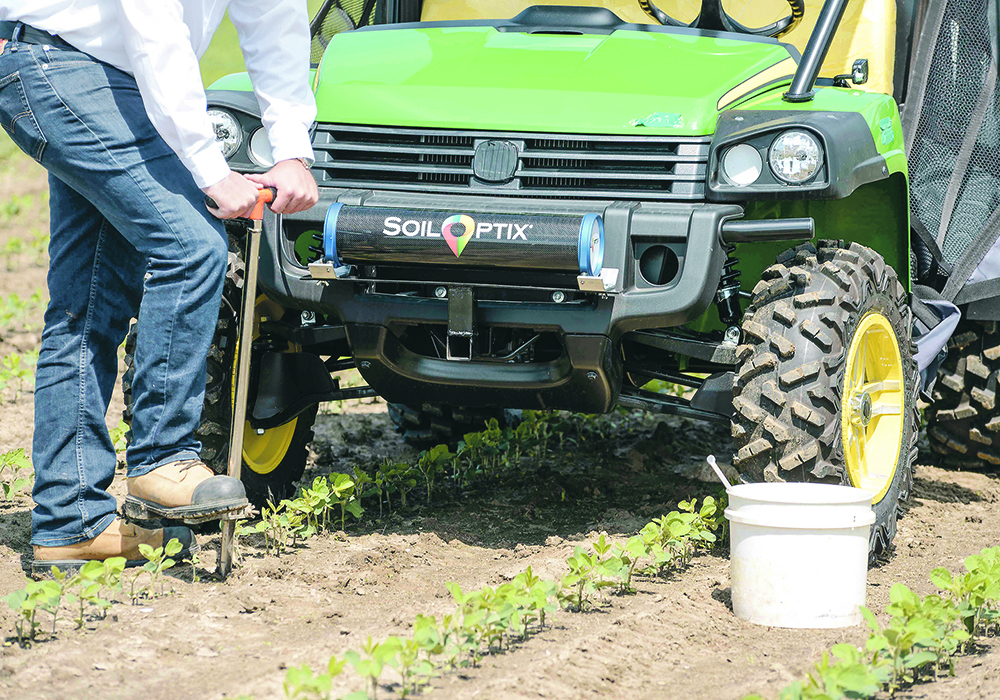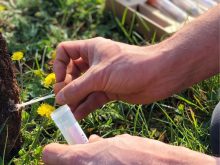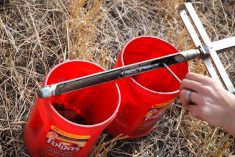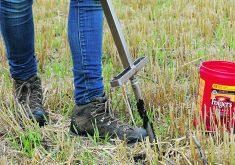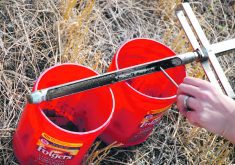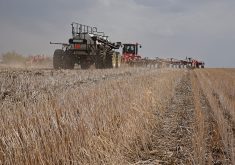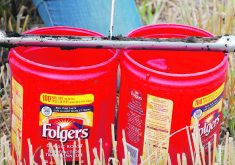A Canadian agricultural tech company is rapidly growing as its gamma ray-based soil analysis system gets adopted around the globe.
Practical Precision was founded in 2017 by Paul Raymer and his parents Barry and Elizabeth Raymer, and it developed a soil sensor called SoilOptix that provides a detailed view of soil contents.
Paul Raymer said the company decided early on it was best to outsource the production of the soil sensor.
“We only produce one (sensor) … We decided that’s not going to be our core competency,” Raymer said.
Read Also

India slaps 30 per cent import duty on yellow peas
India has imposed a 30 per cent duty on yellow pea imports with a bill of lading date on or after Nov. 1, 2025.
“We have an exclusive agreement with our supplier out of the Netherlands that we’ve worked with essentially from day one. This is their expertise, as they build this hardware but essentially customized it for our agricultural needs. We have an agreement internationally for the agricultural marketplace.”
The SoilOptix soil sensor measures the natural radiation coming out of the soil’s topsoil layer to produce high-resolution soil maps for more than two dozen layers of information that can power variable rate applications.
The sensor and back-end computing offered by SoilOptix provides mapping of all common nutrient properties including pH, soil texture, organic matter, carbon, and cation exchange capacity, as well as elevation and plant water availability.
“We’re still collecting some strategically located physical soil samples that help with a calibration for the final map and also to ground truth a particular field,” Raymer said.
In 2017 Practical Precision inked a deal with a silent partner, Hubei Forbon Technology, out of China, and together they formed a new company called SoilOptix.
It is an agricultural technology company, which is much different from the service company model that Practical Precision originally had.
SoilOptix’s focus is to help its customers, including agronomy companies, serve their clients.
“We generate the maps of that spatial variability for each and every soil property and then our customers take it to the recommendations level, and quite often build VRA maps that go into their customers’ (growers’) hands,” Raymer said.
SoilOptix has an agreement with HL Hutchinsons for distribution rights of the soil sensing technology for Europe, and Hutchinsons recently made an agreement that allows Syngenta to supply agronomists and farmers in Europe with the SoilOptix soil analysis, which will be marketed under the name Interra Scan.
In a news release, Syngenta said soil has a critical role to play as a natural carbon sink to help meet the Paris Climate Agreement.
“Soil health is plant health. This is why we are investing into innovative solutions like Interra Scan. In the past, growers would treat the entire field in the same way. With Interra Scan, they know exactly what to apply where and how much of it, making the most of precision technology,” said Alexandra Brand of Syngenta in the release.
Raymer said SoilOptix is developing new products that will help farmers access sustainability programs, including for carbon credits.
“Hutchinson came out of the woodwork a couple of years ago and asked if we could measure carbon. There are various forms of carbon and at the time hadn’t had an experience, but we worked along with them over a number of months to be able to explore and generate some output. Then they went and ground-truthed it,” Raymer said.
“They were pleased with what they saw, and they went to set up a carbon marketing commercial department within their organization.”
He said SoilOptix also enables its customers to work with the digital measurement of soil properties to provide specific outputs for sustainability programs.
For instance, SoilOptix can power variable rate prescriptions, which can be used as eligibility for some environmental programs.
Over the past few years, SoilOptix has also developed a program that reduces processing time, and also created new opportunities for the company.
“That computational power through an (artificial intelligence) engine can look into the data deeper than with what a human can. So, we have an engine built. It took us over two and a half years to get it built because of the complexities of soil, but this is where we are moving towards,” Raymer said.
Practical Precision’s partner in SoilOptix, Hubei Forbon Technology, is rapidly growing the business in China, and SoilOptix is also moving quickly into both North and South America, Europe and India.
“We’re actually looking at exponential growth and with that it has some stretch marks for being able to continue to put the proper amount of resources to be able to help support this growing appetite,” Raymer said.
“We’re very proud of the foundation of resources that we have to date, not only for hardware but also the development team, which is primarily all good old Canadian boys and girls that are helping put this together for us.”He said SoilOptix is working toward finding another partner through a series A funding.


